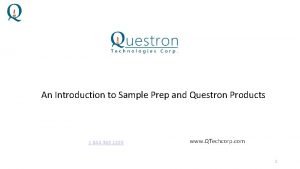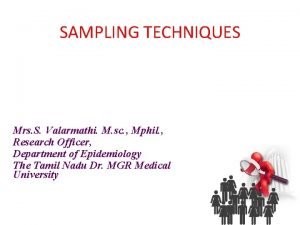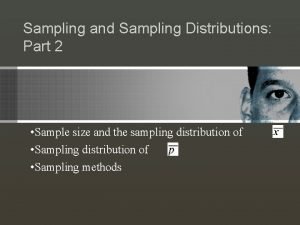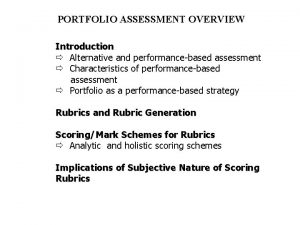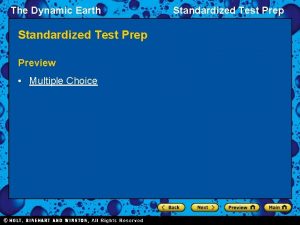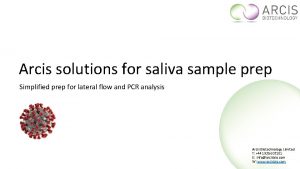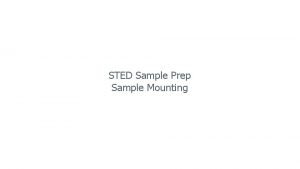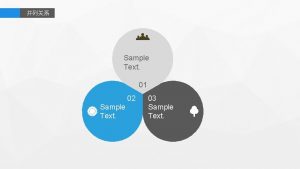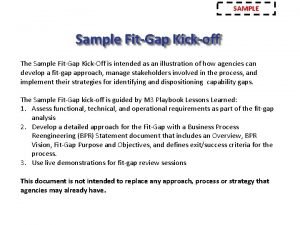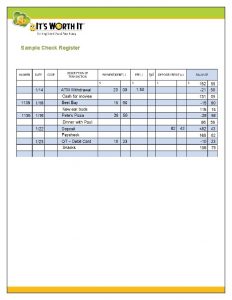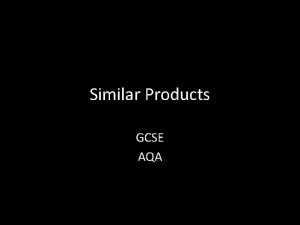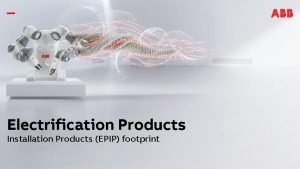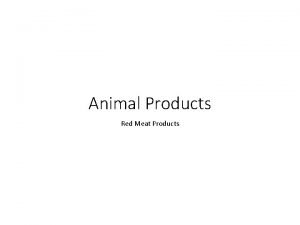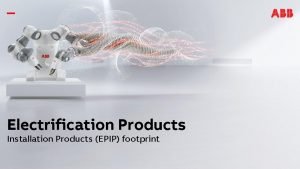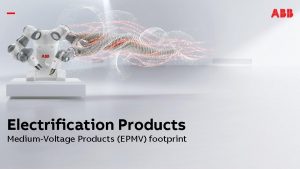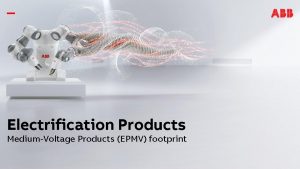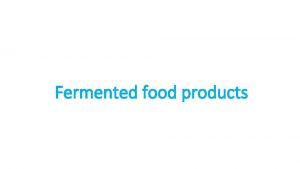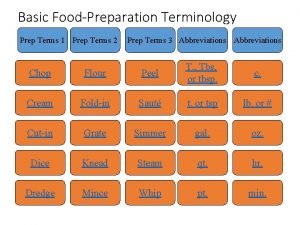An Introduction to Sample Prep and Questron Products






























- Slides: 30

An Introduction to Sample Prep and Questron Products Presentation Title 1 844 363 1223 Insert presentation subtitle here www. QTechcorp. com 1

About Questron Chemistry – with Precision Questron helps labs upgrade to 21 st century sample prep tasks. ”Chemistry With Precision”. We develop, produce and distribute high accuracy, quality laboratory instruments and sample processing systems, including custom-tailored automation and robotic solutions. Using innovative engineering principles and welldesigned user interfaces, we make high quality instruments with focus on built-in safety and labour-saving. Our products are created in dialog with our customers and integrate seamlessly into their work environment. Sold worldwide, Questron products are designed for the 21 st century; they bring to bear the sophistication of current day technologies to sample prep tasks, thereby making them at par with high precision sample analysis instruments. Our flagship products are the Vulcan series workstation, automating the two essential steps of sample preparation - digestions and dilutions, the QLab Pro & QWave series closed and open-vessel microwave digestion systems, and the Nitron, designed for automation in methodologies requiring sample heating to 400°C - ideal for sample prep that uses sulphuric and/or phosphoric acids. Our products are widely used in Soil Testing (mining/ agriculture sectors), Environmental/ Sewerage /Wastewater testing, and Drugs/ Food sample analysis applications. Call or write our applications department and discover what we can do together. 2

The need for Sample Prep Tasks In any chemical analysis, the most important first step is sample preparation. Irrespective of the instrument to be used for sample analysis, the prepared sample must represent the original in sufficient capacity to be able to determine all analytes of interest. Whether you are dealing with mining, food, soils, wastewater, pharma, or industrial product applications, effective sample prep is a crucial step to obtaining accurate measurement. Objective: Measure contaminants, such as mercury or lead in food Step 1: Prepare Sample with heat, acids, dilutions, etc. Chemistry – with Precision Step 2: Analyze prepared sample with appropriate instrument.

Introduction to our target applications Chemistry – with Precision • Sample Prep step precedes Sample Analysis and consists of a plethora of complex and varied tasks that depend on sample type, sample quantity, accuracies required, analytes to be measured, and the protocols that need to be followed. • Depending on the sample, sample prep may involve tasks of sample crushing, sample pulverizing, sieving, filtering, treatment with chelating agents, sample acid digestion, sample extraction, sample ashing, sample dilutions, and others. • Questron develops, manufactures and sells instruments used by analytical laboratories for some of the tasks of sample Prep cited above. These products fall into two major groups: those that help perform stand-alone tasks with analyst presence, and Instruments that partially or fully automate the sample prep tasks through robotic automation. • The rest of this presentation describes these instruments. 4

Chemistry – with Precision Block Digestion Products 5

Chemistry – with Precision Real-time display of temperature and recipe on Controller Queston Block Digestion System consists of a minimum of one block, plus an Interface Control box for control and user interfacing. A third module called Qblock Wireless Controller can be added for higher functionality, data viewing, and system control. The Interface box houses the electronics to compute and apply the precise electrical power required by the digestion block to keep its temperature as per the user entered temperature profile. Questron makes a variety of blocks, varying in size (Standard, Intermediate, and Large sizes), maximum temperature (180, 230 or 400 °C), well diameter ( 50 ml, 100 ml tubes, or custom), and the block material (teflon-coated graphite or anodized aluminum). No matter what the block, however, it gets all the instructions from the Interface control box for total user control. Finally, for users who require data entry, data graphing, easy data viewing, and data archival of up to 8 blocks from one remote station, the addition to your package of ouir Android Computer-based Qblock Controller is the answer. The Android Controller provides communication with up to 8 Interface boxes from up to 25 meters away using Bluetooth protocol, thereby centralizing the operation of all blocks from one location. 6

Centralizing Controller and Block Interface Control Chemistry – with Precision • Questron provides the most comprehensive control and user interface for its blocks in industry. • For those applications that require a block/ controller pair in close proximity, the Interface Control box is the answer. It provides connection to the block via a power and control cable. Temperature profile is user entered via a keypad/large lcd display. The fundamental design objective of a hermetically sealed control box that protects the electronics inside from excessive heat, corrosive reagents, and mechanical agitation is admirably met. At the same time, a secure, cabled connection to the block is also assured. • For those applications that require a group of different blocks located at different locations in a sample prep area to be tied together for entering control and temperature profiles to member blocks, the Questron Android Computer based Controller is an effective addition. This device is centrally located in the lab (i. e. at analyst’s work cubicle) and communicates with up to 8 Interface Box/Block 7 pairs with Bluetooth protocol. The unit is great for central data entry, data control, and data archival.

Standard size, Teflon-coated blocks Chemistry – with Precision Standard graphite block size: 11. 5 X 10 X 2. 75 inch (30 x 25 X 7 cm) Sample Tube Well diameter: 31 mm; 42 wells for 50 ml diameter tubes 48 mm; 20 wells for 100 ml diameter tubes Maximum Programmable Temp: 230 deg. C Electrical Requirements: 220 VAC nominal or 110 VAC nominal, 1200 W heater Local programming and control through Interface Box keyboard input Enhanced, Wireless programming and control through wireless controller + Interface control box 8

Intermediate size, Teflon-coated blocks Chemistry – with Precision Intermediate graphite block size: 13. 8 X 11. 8 X 3. 1 inch (35 x 30 X 8 cm) Sample Tube Well diameter: 31 mm; 56 wells for 50 ml diameter tubes 48 mm; 25 wells for 100 ml diameter tubes Maximum Programmable Temp: 230 deg. C Electrical Requirements: 220 VAC nominal or 110 VAC nominal, 1500 W heater Local Programming and control through Interface Box keyboard input Enhanced, Wireless control and programming through wireless controller + Interface control box 9

Large size, Teflon-coated blocks Chemistry – with Precision Large graphite block size: 14. 6 X 12. 2 X 3. 1 inch (37 x 31 X 8 cm) Sample Tube Well diameter: 31 mm; 72 wells for 50 ml diameter tubes 48 mm; 30 wells for 100 ml diameter tubes Maximum Programmable Temp: 230 deg. C Electrical Requirements: 220 VAC nominal or 110 VAC nominal, 1800 W heater Local Programming and control through Interface Box keyboard input Enhanced, Wireless control and programming through wireless controller + Interface control box 10

Anodized Aluminum blocks for up to 400°C work Chemistry – with Precision Aluminum block size: 11. 5 X 10 X 2. 75 inch (30 x 25 X 7 cm) Sample Tube Well diameter: 31 mm; 42 wells for 50 ml diameter tubes Maximum Programmable Temp: 400 °C Operating Temp. Electrical Requirements: 220 VAC nominal, 1800 W heater Local Programming and control through Interface Box keyboard input Enhanced, Wireless control and programming through wireless controller + Interface control box 11

Some custom blocks made by us for our customers Chemistry – with Precision Graphite Block for custom tubes Custom 400 deg. C block Custom tube holder Custom hole anodized aluminum block, 400 deg. C Block size and material: Customer specified Sample Tube Well diameter: Customer specified Maximum Programmable Temp: Customer specified Electrical Requirements: 220 VAC nominal or 110 VAC Local Programming and control through Interface Box keyboard input Enhanced, Wireless control and programming through wireless controller + Interface control box Custom 230 deg. C block

Chemistry – with Precision Automation Products 13

Qprep Automated Dilution / Liquid transfer system Chemistry – with Precision QPrep is the answer for an integrated solution to the demand for precise dilution, transfers, dispensing and other related liquid handling functions in analytical labs for sample prep work. QPrep is built from ground up to provide methodology-driven capability from a PC to handle precise reagent delivery for large number of samples in multiple racks. The QPrep is able to spike samples with internal standards, preform multiple dilutions, adds reagents consistently, as well as preparing calibration and QC standards. Unit supplied with HEPA-filtered enclosure, as shown below. Key Features • PC Windows 10 driven application software. • Built-in peristaltic pump and two syringes for continuous flow dispensing • Dispensing, Dilutions and Transfers from customer specified tubes. • Dispensing reagent using both Syringe and Peristaltic pump. • 0. 01 ml accuracy in handling reagents • Up to 100 ml / min reagent flow using syringes • 0. 5 to 2 ml/sec reagent flow rate for peristaltic pump • All-Plastic design providing zero contamination from surroundings. • Easily configurable to accept different trays and racks • Handles HF and other concentrated acid solutions • Capable of multiple dilutions • Peristaltic pump driven dual chamber wash station • Teflon®-coated rigid graphite probe for accuracy and ease of cleaning • System enclosed in a HEPA filtered chamber 14

Vulcan automated Digestion & Sample Prep system Chemistry – with Precision Vulcan Workstations are developed to enhance, the benefits of block digestion through automation of addition of corrosive reagents and control of the heating/cooling of sample vessels. Safely delivers precise addition of reagents and post-digestion dilutions - both key and critical tasks in any sample prep work. Either an 8 peristaltic pump module or 6 syringe pump module and an XYZ moving arm are integral to reagent addition. Monitors temperature and sequence of various steps in the digestion process Automatically homogenizes the solutions Performs levelling and sample rack preparation after digestion Provides a contamination free environment that has no exposed metal surfaces. 15

Nitron Automated System for High Temp Digestions Chemistry – with Precision The Nitron High-Temperature Automated Digestion and Dispensing system is designed for routine and customizable methods that require heating up to 400 °C. It is ideal for automating applications involving acids like sulfuric and phosphoric acid. Nitron has a unique way of handling Sulphuric acid fumes to avoid any condensation on digestion area. The six independent reagent lines reduce priming operations, increase dispensing speed and minimize cross contamination. The all-plastic fume hood provides a safe environment by reducing user contact with harmful acid fumes and hot samples. Common Applications: Nitron will automatically: Heat samples up to 400°C Cool samples to ambient Dispense acids and reagents Dilute samples to defined volume Total Kjeldahl Nitrogen C. O. D. Plastics Total Phosphorus Feed Ores Grains Food Plant tissues Oils 16

Chemistry – with Precision Microwave Heated Products 17

Q 1800 Microwave Ashing System Chemistry – with Precision Efficient Ashing of Carbon Rich Samples Using Controlled Air Flow Wireless Controller with Java app Fibreglass furnace LED Bar temperature display Attains 1200 °C in 25 minutes 1800 Watts microwave energy 9 - 50 ml crucibles in a batch Microwave ashing is an innovative analytical sample preparation method that replaces traditional ashing technique using a resistively heated muffle furnace. While maintaining the basic tried and tested principles of ashing, replacing the resistive heating with microwave heating offers distinct advantages, chief among them being speed, reduced energy cost, high sample throughput, repeatability of results, cleaner working environment and increased operator safety. 18

Our Microwave Digestion Systems Chemistry – with Precision Bringing samples into a mineralised state is usually the first step for performing accurate analysis of metals. To transform a sample into this homogenous, aqueous solution, application of heat and use of acids are prerequisites. Currently, two competing methods of heat application are used – direct conductive heat using digestion blocks and application of microwave energy using a microwave oven. Both techniques are in wide use, and both have their niche applications. Questron’s product offering using digestion blocks has been covered in the earlier two sections. In what follows, our two microwave energy based products are described – Qlab microwave digestion platform that can be configured for extractions, digestions, and synthesis applications, and our more recent Qwave Closed vessel system offering higher throughput and versatility for digestions. 19

QLab Microwave Digestion System Temperature monitoring and pressure regulation of each digestion vessels Chemistry – with Precision Preloaded EPA 3015, 3051 3052 and other digestion methods Real-time graphical display for digestion parameters for each vessel Capable of identifying vessel in case of over pressure Dual sample rotation by rotating microwave antenna and 360° carousel rotation ensures each vessel receives equal energy. Ease of loading carousel vessel by vessel within the system User-friendly touch-screen based user interface on stand-alone controller. On-board storage of virtually unlimited multi-step digestion recipes 150 CFM exhaust for fast removal of fumes and vessel cooling Magnetron power cut-off in response to over limit pressure release Corrosion resistant PTFE coated reinforced cavity Spring-loaded door latch providing effective safety shield Compact vessel handling station Up to 1200 Watts power output from 2450 MHz magnetron 20

QLab Microwave Digestion System vessels e. VHP vessel set option Chemistry – with Precision Vessel Type e. VHP Liner Volume 100 ml Temperature Absolute max. temperature Max. control temperature Pressure Absolute max. pressure Max. control pressure Carousel capacity 300°C 230°C 2200 psi 1000 psi 12 21

QLab Microwave Digestion System vessels LVHP low volume vessel set option Chemistry – with Precision Vessel Type LVHT Liner Volume 50 ml Temperature Absolute max. temperature Max. control temperature Pressure Absolute max. pressure Max. control pressure Carousel capacity 300°C 200°C 625 psi 300 psi 30 22

Microwave Digestion System vessels OVP (Over Pressure Valve mechanism) Chemistry – with Precision Excess pressure develops during digestion. If excess pressure develops during digestion in any vessel, pressure sealing piston responds by safely releasing the excess pressure and resealing when safe pressure condition is restored in the vessel. Safe level of pressure is maintained to retain the required temperature. System identifies the vented vessel and keeps the record Vapors released are safely and speedily transferred out of oven Based on intensity of release, microwave power is shut down till user intervention If release is minor digestion method continues without interruption. 23

QWave Microwave Digestion System Chemistry – with Precision 208 -240 VAC, 50/ 60 Hz, 15 A, Fully CSA, and UL compliant oven Dual Magnetrons for high power digestions Wireless control by Android based tablet computer QL-101 -501 Powerful and friendly user interface with touch screen, 7” display Preloaded EPA 3015, 3051 3052 and other digestion methods Unlimited digestion recipes can be developed and stored Software allows users to edit, save and run methods. Printouts are also possible Ports to transfer methods or update software with data storage of about 6 GB Temperature and pressure monitoring and real-time graphical display of digestion parameters of each vessel IR temperature sensing for remote/ non-invasive temperature measurement of all vessels 24

QWave Microwave Digestion Vessels Capable of identifying problem vessel in case of over pressure Microwave power available in small increments Rotating antenna and 360° carousel rotation ensuring uniform microwave heating Chemistry – with Precision Ease of loading carousel vessel by vessel within the system Real-time graphical display for digestion parameters 18 vessel e. VHP High efficiency 150 CFM, 2 -speed blower built-in for fume exhaust and post-digestion vessel cooling inside the oven vessel Corrosion resistant PTFE coated reinforced stainless-steel cavity and acid resistant polymer shell for long life Cavity volume 56 litres 40 X 36 (h x d x w) System cavity has a capability of sensing device to automatically turn off the system if a vessel event occurs 40 LVHT Spring-loaded door that automatically relieves pressure in the case of a vessel event to Vessel carousel provide additional safety Up to 1800 Watts power output using two 2450 MHz magnetrons. Magnetron power cut-off in case of over limit pressure release Full absorption of reflected microwave energy at 100% power Auto Shut off function for system shut down if full power is applied over a specified time to prevent runaway reaction Compatible with Questron 18 -e. VHP or 40 -LVHT vessel sets Option of QBlock pre- and post-digestion treatment of samples in microwave digestion Vessel Loading vessel liner itself to minimise contamination, concentrate samples, boric acid Station treatment for excess HF acid or evaporate excess acids Requires 60 -65 psi air at 1 -2 litres per minute with ¼” pneumatic connection for plastic pipe 25

Chemistry – with Precision Multipurpose Laboratory Products 26

Chemistry – with Precision Laboratory Grade Acid Scrubber for point of source apps Even if you have a roof-top scrubber, the acid fumes are better handled at the point of source, before they corrode and otherwise damage the conduits and other hardware on their way to the roof-top. Questron’s uniquely designed fume scrubber was developed with our Vulcan sample prep workstation in mind, but, in fact, it would find application at any place where concentrated and hot fumes are generated, such as in fume hoods. More than 90% efficiency is achieved for most exhaust constituents, such as HNO 3 and HF acids. The unit requires a source of clean water at 1 liter per minute. Optionally available acid resistant exhaust blower that provides exhaust flow through the scrubber at 1000 to 1400 ft per minute. Scrubber Dimensions: 18. 5 “ diameter X 34 “ high

Questron Portable Fume Enclosure Chemistry – with Precision Questron Portable Fume Hood is an ideal choice in a laboratory application where a portable, table top, acid resistant enclosed space with a fume exhaust blower is required. It presents a viable alternative where permanently fixed fume hoods are too big and too expensive. Two sizes are available. The QS-401 -101 was ideally sized to accommodate one large size or standard size Questron digestion block, It has provision to continuously remove fumes from its inner space with a rugged acid resistant exhaust. The larger, QS-401 -201 can accommodate two large size Questron digestion blocks. Fume enclosure includes one acid resistant Fume blower, p. n. 84 -100 -047 c 28

Questron Plastic Blowers for evacuating corrosive fumes Chemistry – with Precision For Vulcan or another fume generating source to be able to remove the corrosive fumes, they must be drawn out from the exhaust port, as fresh makeup-air comes in to the source of fumes. So, how do you draw the fumes? Keep in mind that the If the lab already has a facility (usually a big blower on the roof that is used to take air out of fume hoods and other equipment), then you can just connect the back of the Vulcan to that facility with a 5 inch diameter hose (provided). In this case, you will not need the Questron blower. On the other hand, if the lab does not have such a capability, then Questron blower will be needed as an accessory. Models available: P. N. 84 -100 -047 a P. N. 84 -100 -047 b P. N. 84 -100 -047 c Dimensions: 10 X 15 X 12 in. (25 X 38 X 30 cm) 16 X 23 X 19 in. (41 X 58 X 48 cm) 16 X 23 X 19 in. (41 X 58 X 48 cm) Exhaust port size 3 in (7. 6 cm) 5 in (12. 7 cm) Weight: 30 lb. (14 Kg) 42 lb (19 Kg) 45 lb (21 Kg) Electrical 200 -240 vac, 1. 2 amps. 50/60 Hz 200 -240 vac, 1. 2 Amps. 50/60 Hz 115 vac, 2. 4 amps. 115 vac, 4 amps. 115 vac, 4. 5 amps. Typical uses Vulcan 42, Vulcan 84 or Vulcan 42 Questron Portable Fume Enclosure with acid scrubber 29

Thank you Contact Us Questron Technologies Corp 6660 Kennedy Rd, #14 a, Mississauga, ON L 5 T 2 M 9 1 844 363 1223 www. QTechcorp. com 30
 Questron microwave digestion system
Questron microwave digestion system Functional and innovative products supply chain
Functional and innovative products supply chain Pepsi products vs coke products
Pepsi products vs coke products Introduction of dairy products
Introduction of dairy products Demerits of cluster sampling
Demerits of cluster sampling Qualitative research is
Qualitative research is Volunteer sample vs convenience sample
Volunteer sample vs convenience sample Difference between cluster and strata
Difference between cluster and strata Stratified sample vs cluster sample
Stratified sample vs cluster sample Uji t satu sampel
Uji t satu sampel Ncsbn model of clinical judgement
Ncsbn model of clinical judgement Prep and drape
Prep and drape Skill 18 base form verbs after modals
Skill 18 base form verbs after modals Cars introduction model
Cars introduction model Sample introduction of guest speaker for webinar
Sample introduction of guest speaker for webinar Society and culture pip examples
Society and culture pip examples Essay on relationship
Essay on relationship Introduction sample essay
Introduction sample essay Introduction in field study
Introduction in field study Discursive essay example
Discursive essay example Composition about family
Composition about family Teaching portfolio introduction
Teaching portfolio introduction Magazine introduction
Magazine introduction Portfolio of evidence
Portfolio of evidence Unique introduction for portfolio
Unique introduction for portfolio Example of portfolio assessment
Example of portfolio assessment Webinar introduction script sample
Webinar introduction script sample Sample introduction for project
Sample introduction for project Sample introduction for portfolio for english
Sample introduction for portfolio for english Cingulum rest seat
Cingulum rest seat Test prep preview
Test prep preview
